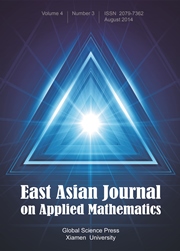No CrossRef data available.
Article contents
A Multi-Exposure Variational Method for Retinex
Published online by Cambridge University Press: 31 January 2017
Abstract
Retinex theory explains how the human visual system perceives colors. The goal of retinex is to decompose the reflectance and the illumination from the given images and thereby compensating for non-uniform lighting. The existing methods for retinex usually use a single image with a fixed exposure to restore the reflectance of the image. In this paper, we propose a variational model for retinex problem by utilizing multi-exposure images of a given scene. The existence and uniqueness of the solutions of the proposed model have been elaborated. An alternating minimization method is constructed to solve the proposed model and its convergence is also demonstrated. The experimental results show that the proposed method is effective for reflectance recovery in retinex problem.
MSC classification
- Type
- Research Article
- Information
- Copyright
- Copyright © Global-Science Press 2017


